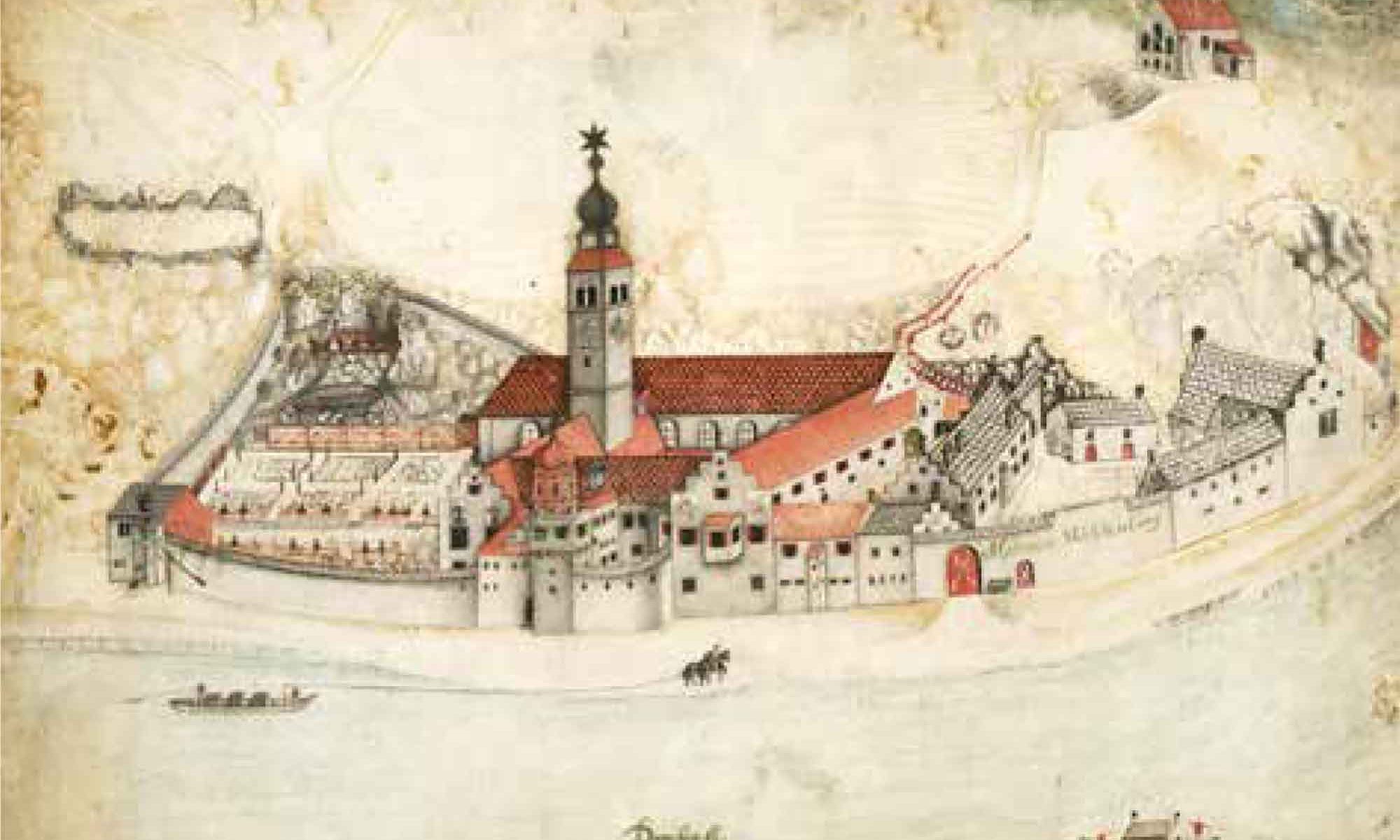Weltenburg lies embedded in an ancient cultural landscape where evidence of human habitation reaches back to the Neolithic Age (4500–3500 BCE). Rising steeply to the south of the abbey, the Arzberg – also called Frauenberg on account of the Chapel of Our Lady that stands there today – was the site of an important hilltop settlement during the Early Bronze Age, Urnfield, and Early La Tène periods (c. 1800–400 BCE). In the 1st century CE, a small military camp was established by the Romans in what is now the development area “Galget“ above the village of Weltenburg. By the second half of the 7th century, there is evidence of a settlement with a wooden church at the site of what is now Staubing. The choice of St. George as the patron of the abbey probably points to a foundation in late antiquity, when a pastoral centre or a hostel for pilgrims may have stood on the site. A namesake Welto is first mentioned in the 8th century. Later, Weltenburg was a possession of the bishop of Regensburg and had close ties to the abbey of St. Emmeram. The story that Saints Eustasius and Agilus, pupils of St. Columba, founded the abbey in the early 7th century was only brought up by scholars of the 18th century. Weltenburg is first mentioned in written documents in 889. St. Wolfgang, who was bishop of Regensburg from 972 to 994, expanded the hilltop castle and fortified the entire Frauenberg hill. An abbot is first mentioned as residing in the abbey in 1040. The Romanesque abbey church – a simple rectangular building with a long single nave, a square choir across its full width, and a crypt – was consecrated in 1191 and remained in use until 1716. Abbot Conrad V (reigned 1441–1450) renovated the church and abbey buildings and breathed new life into the community and administration of the abbey. Weltenburg owes its enduring fame, however, to Abbot Maurus Bächl (1713– 1743), a gifted organizer, leader and financial genius. He was responsible for the construction of the present-day Baroque complex, which culminated in a church designed and decorated by the Asam family. He also initiated the refurbishment of the incorporated parish churches with their farms and estates, the construction of a mill and school, and the purchase of the manor of Affecking. During the Austrian War of Succession, the abbey was subjected to large monetary contributions and commandeered for quartering troops. Faced with the erosion of his achievement, and worn out by the continuous internal conflicts of the abbey, Maurus I resigned in 1743. His successor, Maurus II Kammermaier (1744–1777), concentrated on expanding the abbey library, museum, and scientific and mathematical collections. The next abbot, Rupert Walxhäuser (1778–1786), presided over a burgeoning of musical life which included such talents as the monk Fr. Benno Grueber. Heralded by the confiscation of the abbey church’s silver and an edict prohibiting the admission of new novices, the dissolution of Weltenburg abbey was enacted by order of the Bavarian State on March 18, 1803. Abbot Benedict Werner relocated to Munich, where he composed a 24-volume chronicle of Weltenburg and a 9‑volume history of the abbey’s musical tradition. The abbey brewery and farm buildings were sold, but the church and monastery found no buyer, and from 1812, they served as a local parish church and priests’ lodgings, and as a school and teachers’ accommodation. In 1842, at the instigation of King Ludwig I, the Weltenburg community was reconstituted as a priory of the Benedictine abbey of Metten. Funds were provided to renovate the property and repurchase its former possessions, including the brewery. In 1913, Weltenburg finally regained its full abbatial status. Today, its main task lies in pastoral care, particularly in its two parishes, and in adult education. St. George’s Pastoral Centre (inaugurated in 2014) hosts conferences, seminars, days of recollection, and retreats. The abbey’s long musical tradition lives on in concerts staged by the Weltenburg Musical Society. Under the present abbot, Thomas M. Freihart (elected 1998), the abbey church was completely renovated for a cost of c. € 6.5 million, while the monastic buildings and cliff-side cellars (now the visitors’ centre) were refurbished, and effective flood control measures installed. The entire project began in 1999 and was completed in 2008.


